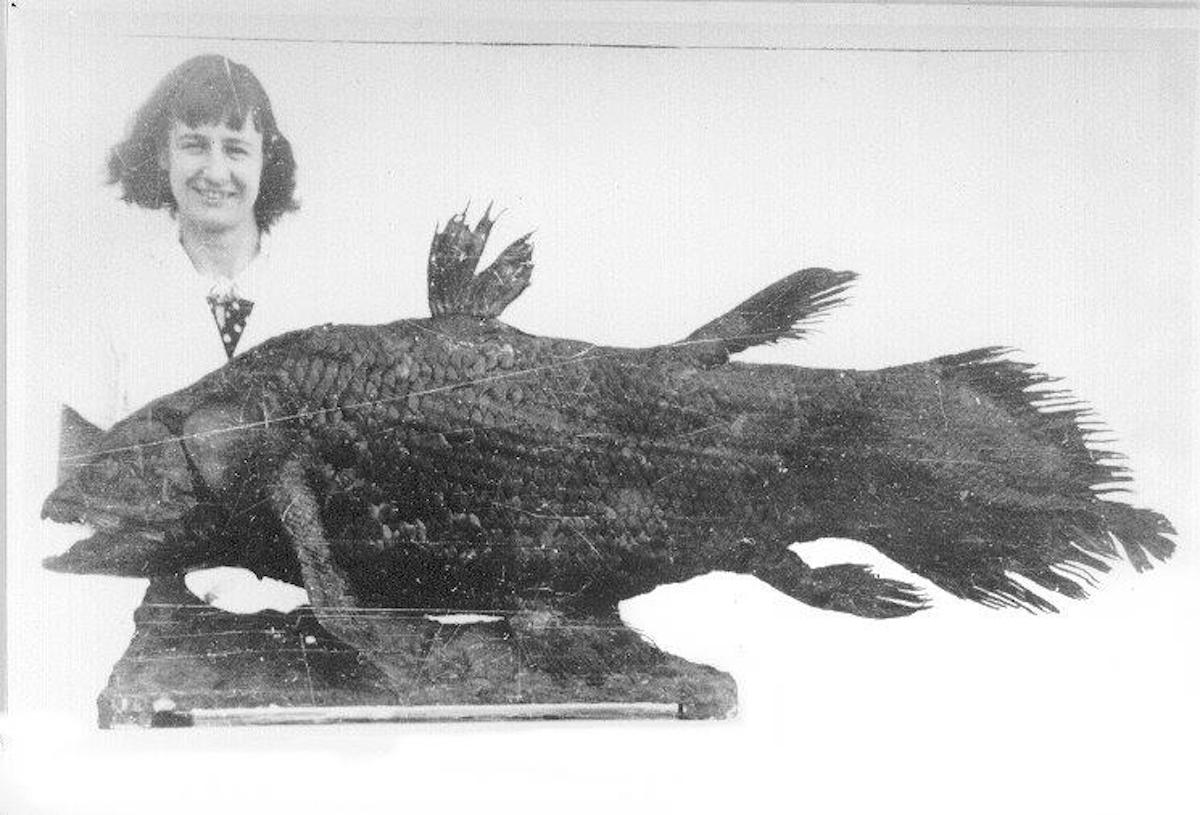The Curious Case of the Coelacanth
Published by Ocean Conservancy
When museum curator Marjorie Courtenay-Latimer found an unusual-looking fish in a South African fisher’s net, she wasn’t quite sure what she was looking at.
After hauling the enormous fish to her office in the back of a taxicab, Courtenay-Latimer reached out to ichthyologist J.L.B. Smith to try to identify the animal. After exchanging some letters and sketches (it was 1938, otherwise a quick Skype call would have expedited the process), Smith became increasingly convinced that Courtenay-Latimer had uncovered something spectacular.
Two months later, when he saw the specimen in person, his suspicions were confirmed. Courtenay-Latimer had discovered a coelacanth (pronounced SEEL-uh-kanth), a fish that was believed to have gone extinct 66 million years ago. That would be like coming face-to-face with a Tyrannosaurus rex—a living fossil that had long been thought a resident of the distant past.


Coelacanths are long-lived, deep-water species that can grow to over six feet and weigh almost 200 pounds. But it wasn’t just the coelacanth’s size that intrigued scientists: they have a number of unusual characteristics that provide clues to their evolution. First, they have paired, limb-like fins called lobe fins that move in a pattern similar to that of four-legged land animals. They also have a complex rostral organ in their nose that uses electrical pluses to find prey in the dark. They have an unusually-configured “hinge” in their skull that allows them to swing their head upwards to open their mouths wider. And they have a notochord, or liquid-filled tube down their back, which is the evolutionary precursor to the vertebrate backbone.
Today, there are two known species, Latimeria chalumnae of the Indian Ocean and L. menadoensis of Indonesia (named for their discoverer, Marjorie Courtenay-Latimer). They are passive drift feeders, meaning they float along with the ocean currents and eat whatever crosses their path. They prefer to live in deep underwater caves that provide lots of protection during the daytime, then venture out to feed at night.
Although coelacanths aren’t a popular seafood species (their oily meat does not taste good and can make you ill) they are still at risk from overexploitation. Scientists estimate there are as few as 500 individuals of L. chalumnae left, leading them to be classified as Critically Endangered by the IUCN. Fishers can accidentally catch coelacanths, and even if they are released, the stress of being brought to shallow waters from a deep depth can have negative effects on the fish.
A number of measures have been put into place to conserve the species, including protecting them under CITES and incentivizing different fishing methods that reduce the risk of accidentally catching coelacanths. More recently, officials designated the Tanga Coelacanth Marine Park off the northern coast of Tanzania that is home to the fish—by 2011, almost 40 coelacanths were caught as bycatch by local fishermen in the area. The Marine Park is supposed to limit fishing, but illegal fishing activity and a proposed deep-sea port within the park’s boundaries still threaten the coelacanth. In 2016, NOAA Fisheries listed the Tanzanian coelacanth population as “threatened” under the Endangered Species Act.
After living 400 million years, the coelacanth still faces the risk of extinction. It’s up to all of us to work to keep our ocean healthy so the coelacanth—and the other known and unknown animals out there—can thrive.
Sign up for our emails!
The post The Curious Case of the Coelacanth appeared first on Ocean Conservancy.
Read the full article at: https://oceanconservancy.org/blog/2019/07/16/curious-case-coelacanth/


